Urologic prosthetics: an imaging review of short- and long-term complications
- PMID: 38985291
- PMCID: PMC11711722
- DOI: 10.1007/s00261-024-04491-6
Urologic prosthetics: an imaging review of short- and long-term complications
Abstract
Purpose: Urologic prosthetics offer significant quality of life enhancements for patients with stress urinary incontinence and erectile dysfunction. Artificial urinary sphincter and penile prosthesis are the most commonly used prosthetics for these patients. Radiographic imaging offers important insight, guiding treatment when patients present with complications. Herein, we pictorialize normal radiographic findings and complications alike.
Methods: We reviewed our IRB-approved prosthetics database, highlighting patients with prosthetic complications with available imaging. We collected imaging from patients without complications for baseline reference.
Results: The radiographic appearance of orthotopic genitourinary prosthetics and a review of short- and long-term complications including hematoma, infection, malpositioning, leak and erosion are pictorialized.
Conclusion: Radiologic imaging serves as a vital complement to history and physical examination, aiding in the identification of complications and potentially streamlining surgical preparations. It is important for radiologists to familiarize themselves with standard prosthetic nomenclature, normal positioning and appearance, along with imaging findings of common complications.
Keywords: Complications; Genitourinary; Prosthetics; Review; Urology.
© 2024. The Author(s).
Conflict of interest statement
Declarations. Competing interests: The authors have not disclosed any competing interests.
Figures
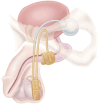


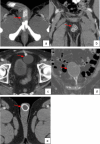





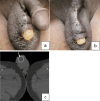


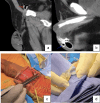
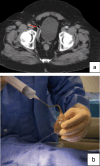
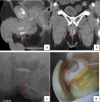
Similar articles
-
Future considerations in prosthetic urology.Asian J Androl. 2020 Jan-Feb;22(1):70-75. doi: 10.4103/aja.aja_103_19. Asian J Androl. 2020. PMID: 31571642 Free PMC article. Review.
-
Fundamentals of prosthetic urology.Asian J Androl. 2020 Jan-Feb;22(1):20-27. doi: 10.4103/aja.aja_108_19. Asian J Androl. 2020. PMID: 31696834 Free PMC article. Review.
-
Genitourinary Prosthetics: A Primer for the Non-urologic Surgeon.Surg Clin North Am. 2016 Jun;96(3):533-43. doi: 10.1016/j.suc.2016.02.009. Surg Clin North Am. 2016. PMID: 27261793 Review.
-
A Contemporary Analysis of Dual Inflatable Penile Prosthesis and Artificial Urinary Sphincter Outcomes.J Urol. 2019 Jan;201(1):141-146. doi: 10.1016/j.juro.2018.07.046. J Urol. 2019. PMID: 30059687
-
CT and MR Imaging Features of Artificial Urinary Sphincters, Penile Prostheses, and Other Devices in the Male Lower Genitourinary Tract.Radiographics. 2018 May-Jun;38(3):794-805. doi: 10.1148/rg.2018170087. Radiographics. 2018. PMID: 29757723 Review.
References
Publication types
MeSH terms
LinkOut - more resources
Full Text Sources
Medical

